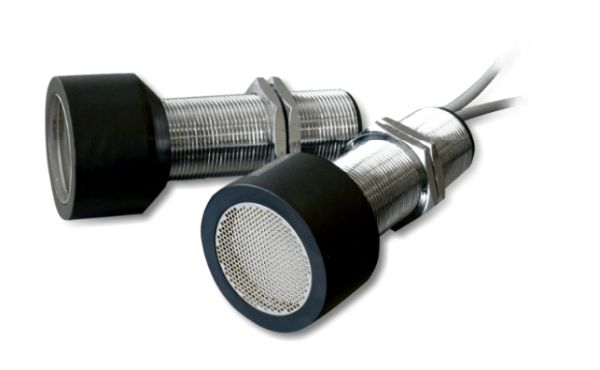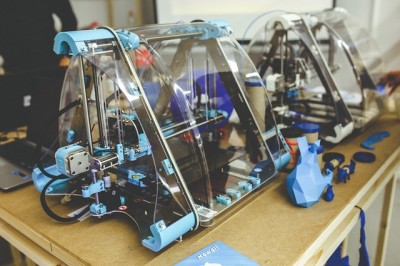Electrostatic Ultrasonic Sensors & Sensor Kits – a Clever Solution

The use of ultrasound for sensing has proven a practical solution time and time again. These little gadgets, used for measuring the distance to objects with the help of sound waves, are much more accurate than many other solutions used for the same purpose.
They don’t require maintenance, so buying the sensor is your only expense. This article deals specifically with electrostatic sensors, so we’ll have to see what sets them apart from other types.
It’s important to know the distinction between the three types of sensors: electromagnetic, piezoelectric, and electrostatic, to decide which is the most suitable variant for you.
We’ll try and describe them in a nutshell before we proceed to our little electrostatic gadgets. Find out more on this website.
A Bit of History Trivia
Knowing the history of a particular technology helps tremendously to understand its structure and use. By seeing how the technology evolved through the years, you get a much clearer idea of why devices, in this case, ultrasonic sensors, look and perform the way they do.
Namely, back in the 18th century, Italian physiologist and biologist Lazzaro Spallanzani discovered that bats rely on hearing instead of sight to fly. Apart from sonography, they didn’t really make discoveries until Pierre Currie found the connection between pressure on crystals and electrical voltage. Finally, the very first ultrasonic transducer was introduced by Paul Langevin in the form of a hydrophone. As the name suggests, they used it for practical underwater purposes, such as iceberg and submarine detection.
Later on, ultrasonic sensing started spreading into other areas, notably medicine. For example, they made revolutionary progress when they employed it to find tumors by recording echoes of sound waves on paper. This method is known as hyperphonography and can be considered the beginning of ultrasound imaging. Today, this type of imaging is a staple in medicine and can be found everywhere. Besides tumors, they use it to detect cancers, twin pregnancies, ovarian cysts -the list goes on.
As more people became aware of the potential of ultrasonic sensing, they began to apply it in different industries. An interesting example is industrial welding, where they create a weld by applying high-frequency vibrations to joined workpieces under pressure. What makes sensors especially practical here is that you don’t need any adhesives, nails and bolts, materials for soldering, etc. – the sound waves take care of it all.
Electromagnetic and Piezoelectric Sensors
The way electromagnetic devices operate is based on an elementary principle: a coil of copper wire wrapped around a piece of metal. Once you apply electric current to the wire, the ferromagnetic metal piece creates a magnetic field. It’s easy to control this field: you change its strength by increasing or decreasing the amount of current. This combination of electricity and magnetism makes for applicable sensors perfect for power tools and household appliances.
On the other hand, piezoelectric devices sense and create electricity with the help of vibrations. It works by applying mechanical force on a crystal between two metal plates. This obstructs the electrical charges in the crystal, voltage is created, and the plates can produce electricity. Piezoelectric sensors are heavily used for medical purposes, microwaves, musical instruments, alarm clocks, etc.
What about Electrostatics?
These ultrasonic sensors operate quite differently than the previous two types. Basically, they detect the electric field created around an object that is electrified. Now, this field has a certain intensity which the sensors use to convert it to potential in the following way. The field’s intensity is in proportion to the electric potential. By distancing itself from the electric object, it decreases. The sensor’s controller can then calculate the potential precisely.
There are several reasons why people use electrostatic transducers. Since extremely short signals can be produced and received, these sensors can measure distances with great accuracy, often compared to capacitive microphones due to the similar working principle; their wide bandwidth makes them highly applicable in many situations.
A creative approach is to combine an electronic driver and receiver with the electrostatic device. This way, you can measure more deeply if the need arises, e.g., dealing with deep tanks or other similar containers. Ultrasonic sensors are generally well-known for their successful measurement of liquids, especially the electrostatic type.
With their low ring-out and non-resonance, electrostatic sensors are much more sensitive than other types. In terms of range, they excel both in short and long-range situations. This is a paramount quality for any sensor; limited reach means limited options. Hence, the more versatile a sensor, the better. On wide frequency ranges, these devices answer flatly.
Sensor Kits
The great thing about sensors is that you can incorporate them into kits suitable for all kinds of DIY projects. Kits are extremely versatile; you won’t have to use separate gadgets for different purposes. Operating as a kind of a Swiss-Army knife, a kit can sense temperature, movement, altitude, sounds, etc.
Also, prototyping sensor boards allow users to integrate whatever sensor they like quickly and effectively. You can create your own customized board usable in almost any situation by combining different sensor types.
Different Uses
Much like the other types of ultrasound sensors, the electrostatic model is versatile enough to be used for various purposes in different industries.
We already talked about their ability to measure deep tanks. This also translates to the food and beverage industry, where they often need to measure liquids in bottles. Furthermore, Electrostatic Ultrasonic Sensors perform excellently when monitoring liquid and solid tank levels or even irrigation systems. Without them, engineers and industrialists would have difficulties performing the same operations.
In the agricultural industry, manual labor for spraying crops belongs in the distant past, as they employ machinery for that very purpose. But how can sensors help in this scenario? They are integrated into machines that spray crops of different heights. And if you consider the fact that some fields are enormous, with various crops short or tall, the role of electrostatic sensors becomes even more essential.
Vehicles also make great use of these devices. Obvious examples that come to mind are drive-up or drive-through industries, where the employees need to detect approaching vehicles for faster response.
Also, landing assistance would be significantly pooper without sensing. And while we’re at assistance, it’s good to mention heavy equipment, where electrostatic sensors help operators avoid a collision.






